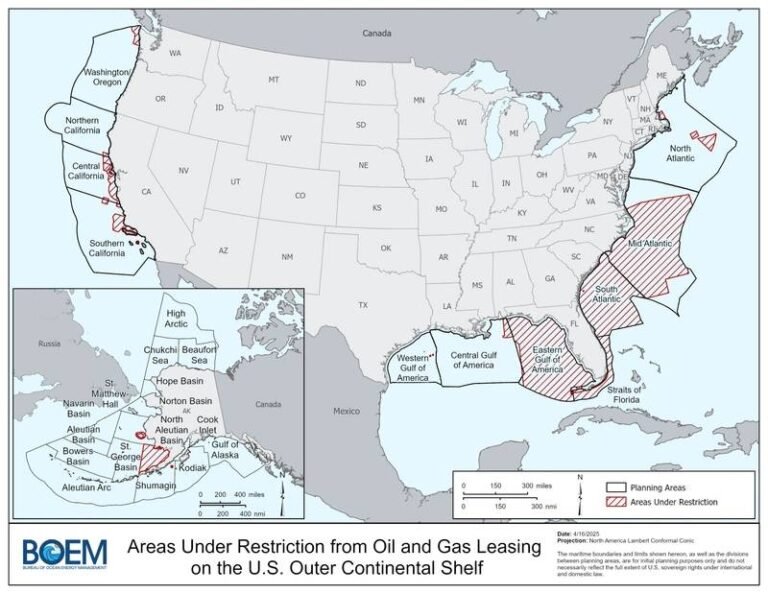US Secretary of the Interior Initiates Public Engagement for Offshore Oil and Gas Lease Sales
US Secretary of the Interior Doug Burgum has directed the Bureau of Ocean Energy Management (BOEM) to begin a public engagement process to develop a new schedule for offshore oil and gas lease sales on the U.S. Outer Continental Shelf.
Secretary Doug Burgum emphasized the importance of this initiative in securing American Energy Dominance. He stated, “Through a transparent and inclusive public engagement process, we are reinforcing our commitment to responsible offshore energy development—driving job creation, bolstering economic growth, and strengthening American energy independence.”
Changes in BOEM’s Jurisdiction
BOEM’s jurisdiction on the Outer Continental Shelf has recently undergone changes. The establishment of a new planning area offshore Alaska—the High Arctic, as the 27th OCS planning area—has been announced. Additionally, boundaries of other existing planning areas are being updated to align with BOEM’s revised jurisdiction.
11th National Outer Continental Shelf Program
Once finalized, the 11th National OCS Program will replace the current 10th Program (2024–2029), which includes three lease sales over five years—all located in the Gulf of America. As of April 1, 2025, BOEM manages 2,227 active oil and gas leases covering approximately 12.1 million acres in OCS regions. Of these, 469 leases are currently producing oil and gas.
The OCS is known to hold vast quantities of undiscovered energy resources. BOEM’s most recent assessment estimates a mean of 68.79 billion barrels of oil and 229.03 trillion cubic feet of natural gas.
Industry Response
National Ocean Industries Association President Erik Milito commended Secretary Burgum and the administration for launching the 11th National Outer Continental Shelf Oil & Gas Leasing Program. Milito highlighted the importance of this program in restoring long-term certainty and stability for the Gulf of America’s offshore energy sector.
Milito emphasized the critical role of the Gulf of America in powering the nation, contributing nearly $33 billion to the U.S. economy each year, supporting close to 400,000 jobs, and reinforcing energy security.

